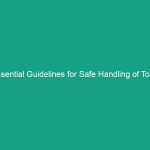Good Morning Team!
Today, we’re diving into a crucial aspect of our daily operations: Essential Daily Safety Huddles. These huddles are not just a routine; they are a vital part of our commitment to ensuring a safe and productive work Environment. Let’s explore why these quick reminders can significantly boost our shift Safety.
Understanding Essential Daily Safety Huddles
Essential Daily Safety Huddles are brief meetings that occur at the start of each shift. They are designed to remind everyone about safety practices, address any immediate safety concerns, and encourage open communication about potential Hazards. These huddles serve as a critical touchpoint to reinforce our safety culture and ensure that safety remains a top priority throughout the day.
Why Are Safety Huddles Important?
Safety huddles provide an opportunity for team members to share observations, discuss recent incidents, and remind each other of the protocols that keep us safe. Regular engagement in safety discussions can lead to:
- Increased awareness: Keeping safety top of mind reduces the risk of accidents.
- Better communication: Allows for immediate feedback and the sharing of vital information.
- Stronger teamwork: Builds a culture where everyone feels responsible for safety.
Common Misconceptions
Some may believe that safety huddles are merely a formality or a waste of time. However, when effectively executed, they are essential for:
- Identifying and addressing Hazards.
- Maintaining compliance with safety Regulations.
- Fostering a proactive safety culture.
Key Hazards, Risks, and Safety Considerations
In our work environment, various hazards can pose risks to our safety. Understanding these hazards is critical to preventing accidents. Here are some common risks associated with our daily operations:
- Slip and Fall Hazards: Wet floors, uneven surfaces, and cluttered walkways can lead to serious injuries.
- Equipment Safety: Improper use or Maintenance of machinery can result in accidents.
- Ergonomic Risks: Repetitive motions and poor lifting techniques can lead to musculoskeletal disorders.
Ignoring safety protocols can lead to severe consequences such as injuries, increased insurance costs, and lost productivity. It’s crucial to address these risks proactively.
Best Practices, Procedures, & Actionable Advice
To maximize the effectiveness of our safety huddles, consider implementing these Best Practices:
Step-by-Step Safety Procedures
- Gather the Team: Ensure everyone is present and engaged.
- Review Past Incidents: Discuss any accidents or near misses that occurred during previous shifts.
- Identify Current Hazards: Encourage team members to speak up about any hazards they’ve noticed.
- Reiterate Safety Protocols: Remind everyone of the safety procedures relevant to the day’s tasks.
- Encourage Open Dialogue: Allow time for questions and suggestions.
Practical Tips and Real-Life Examples
Here are some tips to enhance our daily safety huddles:
- Keep it Brief: Aim for 10-15 minutes to maintain focus.
- Be Visual: Use charts or safety posters to illustrate key points.
- Rotate Leaders: Give different team members a chance to lead the huddle, enhancing engagement.
Case Studies
Consider the following example from a past incident:
In a manufacturing facility, a team held a safety huddle where they discussed a near-miss incident involving a malfunctioning machine. By addressing the issue immediately, they implemented a temporary shutdown of the equipment for repairs. This proactive measure prevented potential injuries and saved the company from significant downtime.
Regulations, Standards, and Compliance
Understanding and adhering to safety regulations is paramount. Compliance with OSHA Standards and company-specific safety policies helps protect all employees. Key regulations include:
- osha Regulations: Ensure all safety practices meet or exceed OSHA standards.
- ISO Standards: Follow ISO guidelines for Occupational Health and safety.
- Company Protocols: Familiarize yourself with our specific safety policies and procedures.
Non-compliance not only puts employees at risk but can also lead to legal repercussions for the company.
Employee Engagement & Discussion
Now, let’s open the floor for discussion. Here are some questions to consider:
- What safety challenges have you encountered related to our current operations?
- How can we improve our safety huddles to make them more effective?
- Do you have any suggestions for addressing specific hazards you’ve noticed?
Your insights are invaluable in creating a safer workplace.
Conclusion & Key Takeaways
To wrap up, remember that Essential Daily Safety Huddles are a crucial part of our safety culture. By actively participating and sharing insights, we can enhance our Workplace Safety. Let’s prioritize these practices to ensure we all go home safely at the end of the day.
Thank you for your attention and commitment to safety. Together, we can foster a safer working environment for everyone!


